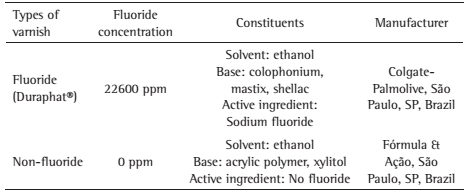
If dental care is not performed with fluoridated toothpaste and if no fluoride-containing cooking salt is used, fluoride supplementation with fluoride tablets may be performed according to the indicated dosing schedule. Therefore, before prescribing fluoride tablets, the pediatrician or dentist must make an individual fluoride history. Having gone through all these, you can understand the reason for fluoride varnish .
Systemic fluoridation
Drinking water

For systemic fluoridation, fluoride can be added to the drinking water. However, this measure does not take place in Germany, although drinking water generally contains only small amounts on average 0.1 to 0.3 milligrams per liter of natural fluoride.
Fluoride Tablets
Another way to administer fluoride systemically is to use fluoride tablets. The dentist or pediatrician determines the dosage of the fluoride tablets graded according to the age, the intake of iodized salt and the level of the fluoride content of drinking water (TWF).
From the dental perspective, fluoridation is not required before the sixth month of life. In the first years of life, fluoridation can be combined with vitamin D. The fluoride-containing tablets are effective in preventing tooth decay when they are sucked regularly. However, it is also possible for children to brush their teeth with a fluoride-containing infant toothpaste containing 0.5 milligrams of fluoride per gram of toothpaste after the first tooth fracture.
Table salt
In addition, fluoridated table salt can be used in the nutritional preparation that has been available in our country. According to dental findings, the administration of fluoride tablets can be replaced by the use of fluoridated table salt and fluoride-containing toothpaste. In principle, only one of the listed measures of systemic fluoride screening should be used to avoid overdosing.
Local fluoridation
Toothpaste
For a good preventive effect, a regular and constant supply of fluorides is necessary. For this purpose, it is advised to clean babies after the breakthrough of the first deciduous teeth once a day with a maximum of a pea-sized amount of fluoridated children’s toothpaste contains 0.5 milligrams of fluoride per gram of toothpaste. From the second year of life, this cleaning should be done twice a day. After the first permanent teeth break about age six, children may use adult toothpaste with slightly higher fluoride content up to 1.5 milligrams fluoride per gram of toothpaste to brush their teeth. However, only a small amount of toothpaste pea-sized amount should be used, as small children often swallow some of the toothpaste. The same is true for adults.
Fluoride varnishes, gels, and solutions
In the dental practice, everyone can get fluoridation of the teeth in the context of individual prevention. Patients who are very prone to tooth decay, in addition to the usual dental care by the dentist, prescribed fluoride preparations fluoride solutions, gels and lacquers use and apply them specifically to the teeth. Fluoride-containing toothpaste solutions contain, in addition to the conventional fluoride, amine and stannous fluorides. In addition to the caries-protective effect, these solutions also provide prevention of gingivitis, as they inhibit bacterial growth. The highly concentrated fluoride lacquers and gels are only applied to caries-prone partial surfaces of the teeth, for example, the tooth necks. They improve the resistance of the tooth surface to acids and relieve discomfort caused by hypersensitive tooth necks.
